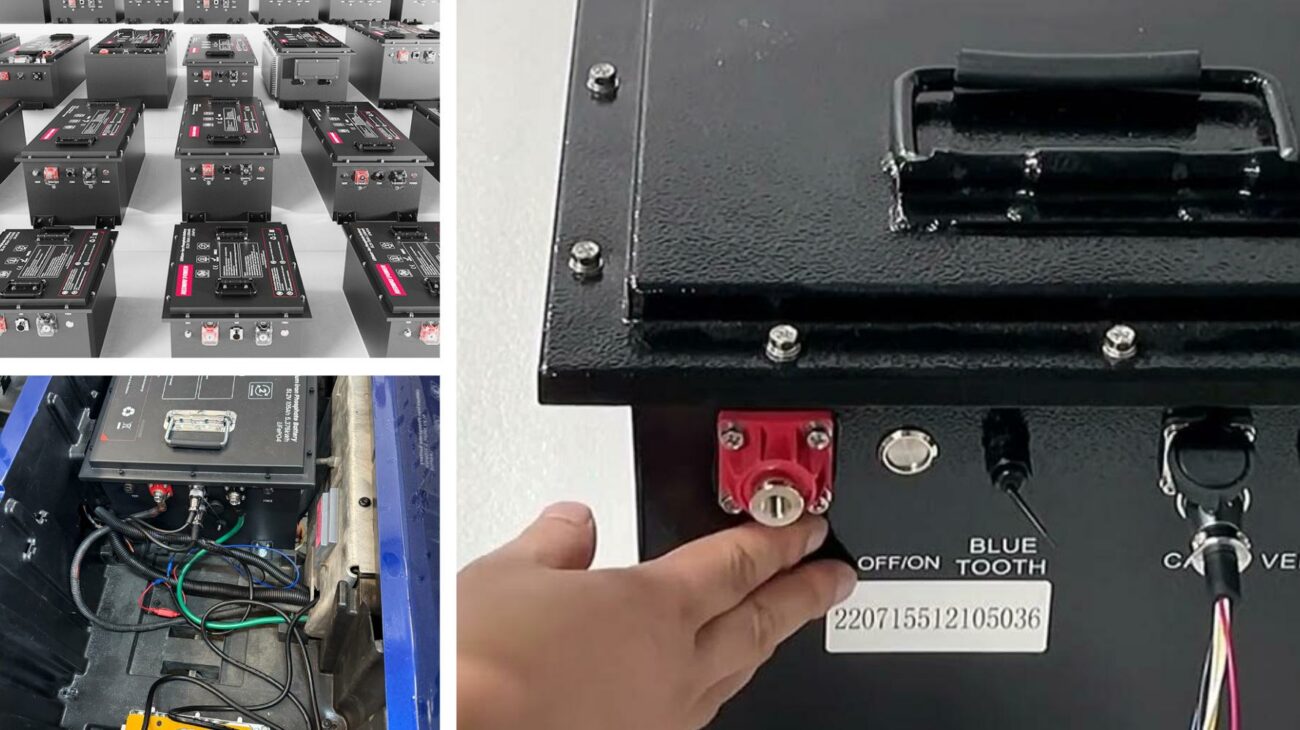Loose connections create resistance, generating heat that melts lead terminals. Corrosion buildup increases resistance, while overcharging or incompatible chargers force excessive current flow. High-demand accessories like upgraded motors or lights can also overwhelm the system. For example, a 48V system drawing 300+ amps during acceleration risks terminal deformation if connections aren’t torque-secured.
72V 100Ah Lithium Golf Cart Battery
How to Repair a Melted Battery Terminal in 5 Steps
- Disconnect cables using an insulated wrench to avoid sparks
- Sand corroded areas with 200-grit abrasive paper until shiny
- Apply anti-corrosion gel (e.g., NO-OX-ID A-Special) to clean surfaces
- Install brass shims or terminal adapters for improved conductivity
- Torque connections to 110-120 in-lbs using a calibrated wrench
When performing repairs, always wear acid-resistant gloves and safety goggles. For severely damaged posts, consider using a terminal puller tool to extract melted lead without damaging the battery case. After reassembly, test the connection’s resistance with a multimeter—readings above 0.05 ohms indicate incomplete repairs. Professional technicians often use thermal imaging cameras during load tests to identify hot spots before they cause terminal failure.
Can You Prevent Battery Post Melting? 3 Proactive Measures
- Monthly Terminal Inspections: Check for white sulfate crust or green copper oxide
- Voltage Regulation: Use smart chargers that stop at 100% SOC (State of Charge)
- Load Testing: Verify accessories don’t exceed 80% of battery’s CCA rating
Are Melted Battery Terminals Dangerous to Use?
Compromised terminals risk acid leaks, electrical fires, and voltage drops. A study by Battery Council International showed 23% of golf cart fires originate from degraded terminals. Replace immediately if:
- Visible cracks radiating from post
- Voltage variance >0.5V between cells
- Sulfur smell near battery compartment
Damaged terminals can release hydrogen gas during charging, creating explosion risks in enclosed spaces. The Occupational Safety and Health Administration (OSHA) requires immediate replacement of any battery showing terminal deformation exceeding 15% of original diameter. Always store compromised batteries in vented containers and contact hazardous waste disposal services—lead exposure causes permanent neurological damage.
Which Replacement Battery Lasts Longest for Golf Carts?
| Battery Type | Voltage | Price | Cycle Life | Weight |
|---|---|---|---|---|
| Trojan T-875 Flooded | 6V | $120-$180 | 1,200 cycles | 62 lbs |
| Crown CR-190 Lithium | 48V | $900-$1,200 | 4,000 cycles | 28 lbs |
Expert Views: Redway Power Solutions Analysis
“Melted terminals often trace to overlooked torque specs. We’ve measured 40°F terminal temperature spikes from under-torqued lugs. Our stress tests show brass terminals withstand 250°F vs lead’s 160°F melting point. Always use marine-grade terminals for high-vibration environments.” – Redway Senior Engineer
Conclusion
Persistent terminal melting indicates systemic electrical issues requiring professional diagnosis. Prioritize OEM-spec components and avoid makeshift repairs. Lithium conversions eliminate lead terminal vulnerabilities but require upfront investment.
FAQ
- Can JB Weld fix a melted battery post?
- No—epoxy lacks conductivity. Use only UL-listed terminal repair kits.
- How hot is too hot for battery terminals?
- >140°F (60°C) demands immediate shutdown. Normal operating range: 80-110°F.
- Does insurance cover melted battery damage?
- Only if caused by manufacturer defects. Excludes corrosion-related claims.



